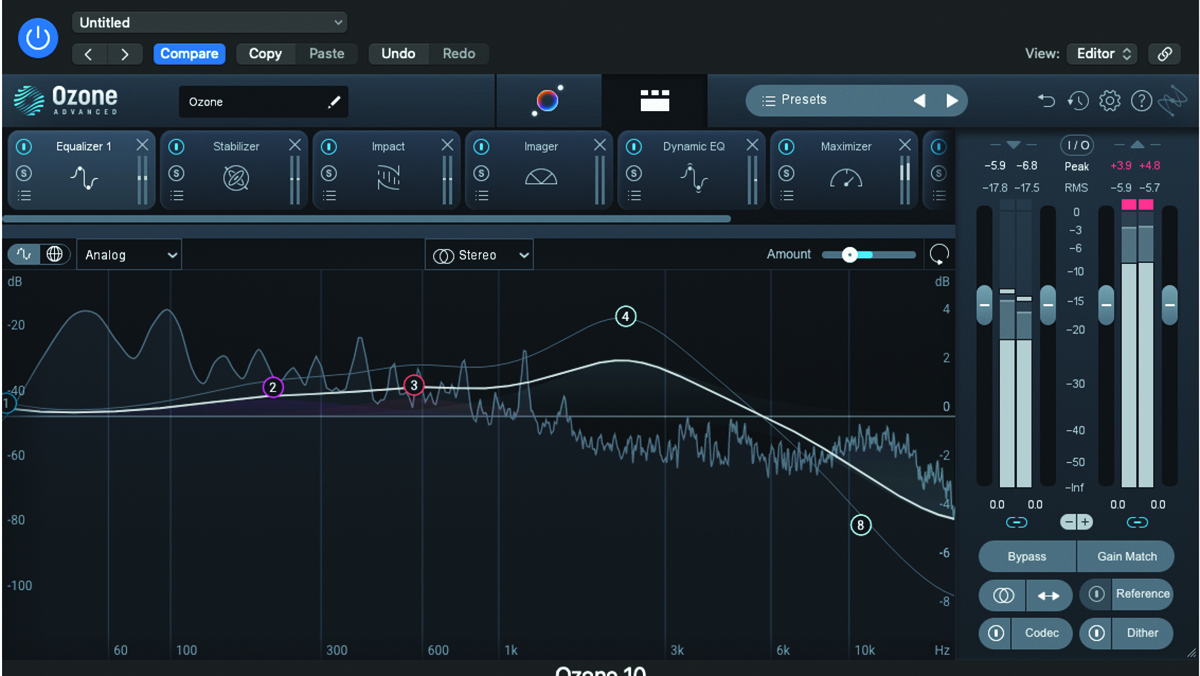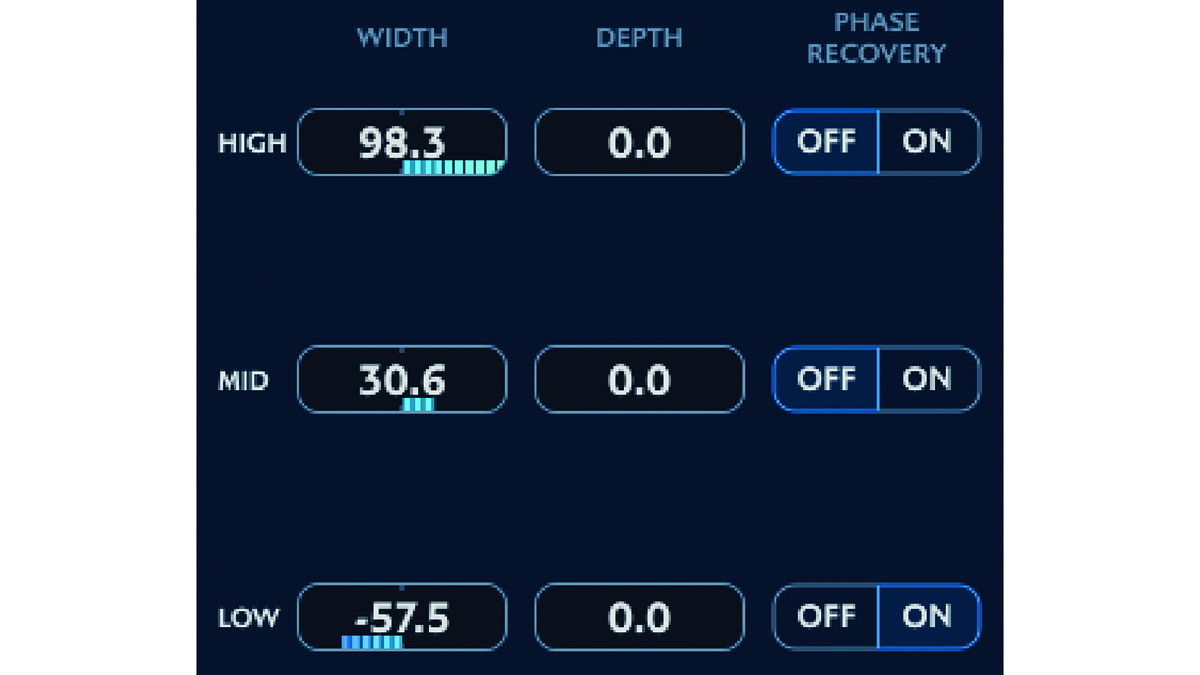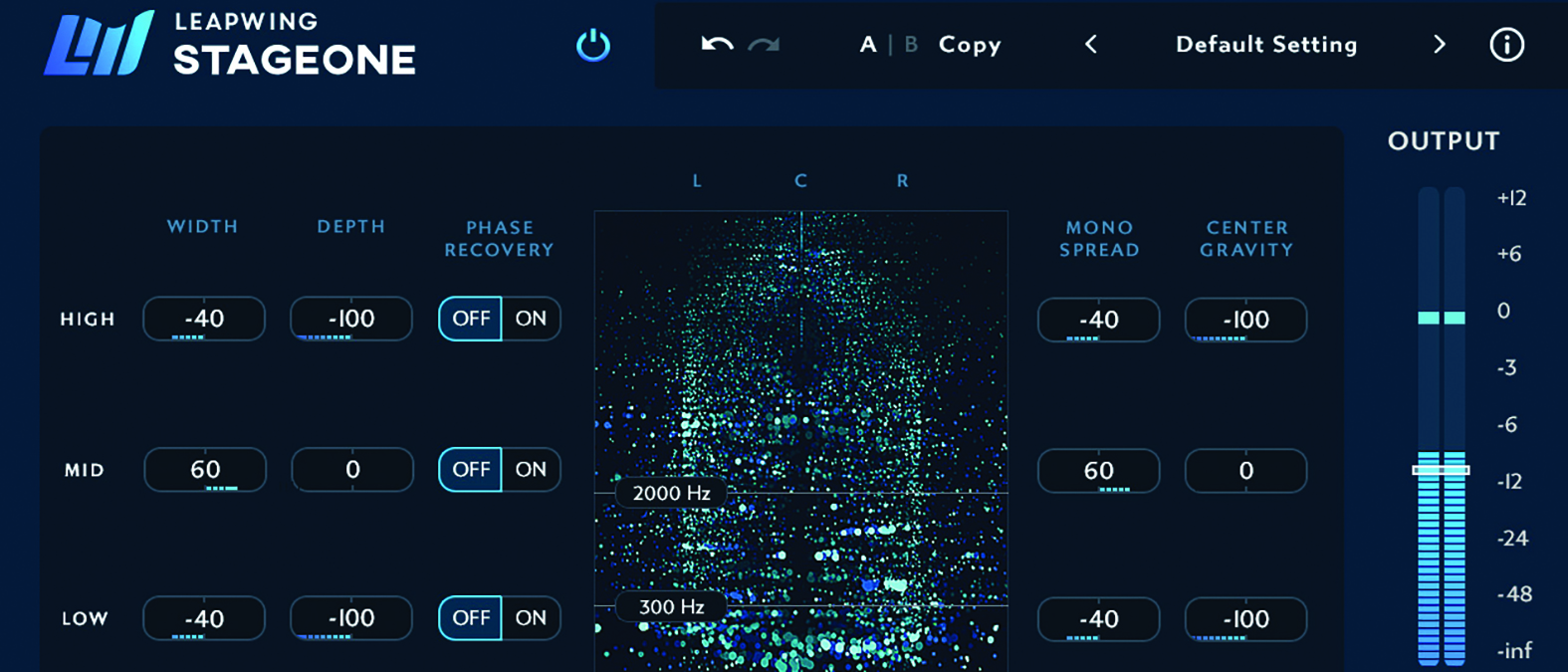MusicRadar Verdict
A premium stereo processor with superb sounding algorithms and an improved, more flexible toolset.
Pros
- +
High-quality and transparent sounding algorithms.
- +
Useful new visual feedback.
- +
Split bands adds flexibility when mixing.
Cons
- -
Can’t solo bands.
- -
No correlation meter.
- -
No mono check button.
MusicRadar's got your back
Leapwing Audio StageOne 2: What is it?
When Leapwing Audio’s StageOne stereo processor was launched back in 2019, it was praised for its high-quality algorithms, but some found the interface a little lacking. Now with the version 2 release, it sports multiband processing, new features and a snazzy stereo visualiser that greatly improves the plugin workflow.
Leapwing Audio’s plugins might not be the cheapest, but they’re known for their high-quality and transparent-sounding algorithms. As such, StageOne is often cited on forums as being one of the best-sounding options for clean width enhancement that can even be used when mastering.
Leapwing Audio StageOne 2: Performance and verdict
The plugin consists of five algorithms for controlling the soundstage, including Width, Depth, Mono Spread and Centre Gravity from the first version, plus the new Phase Recovery function.

• iZotope Ozone 10 Standard
The Imager module inside iZotope’s Ozone 10 mastering suite gives you up to four bands of stereo control.
• Tone Projects Basslane Pro
It focuses more on the low end, but Basslane Pro has some nifty features.
Leapwing has also apparently fine-tuned and improved some of these for this version. Where Mono Spread can add width to a mono signal by stretching out the centre channel, the Width control can widen or narrow the side information without affecting the phantom centre. Both are mono compatible, so you don’t have to worry about getting any nasty surprises, although you might get some subtle differences and pre-ringing artefacts if you start to use both at more extreme settings.
Centre Gravity is fairly easy to understand as it just steers the signal more to the left or right. Perhaps a little more ambiguous is the Depth control, which adds in ‘directionally optimized’ reflections to enhance the sense of depth in the sound field. Essentially, it can help you place elements more forwards or backwards in the mix and give them more of a larger-sounding sense of 3D space.
Finally, we have the new Phase Recovery algorithm, which has a simple on/off control for each band. This identifies out-of-phase components and then attempts to realign them to avoid losing information when summed to mono. In practice, it’s fairly effective at subtly tightening up things like overly-wide synth patches, but much more impressive when used to treat problem recordings and dramatically out-of-phase material. We were able to take an old string sample that nearly cancelled out in mono, and make it much fuller-sounding and more usable. It won’t work on everything, but it’s definitely a welcome tool to add to StageOne’s already useful arsenal.

Multiband mixing
Where previously the modules worked across the whole spectrum, you now have low, mid and high bands, with editable crossovers. This greatly increases the flexibility of the plugin, as you can target the processing at different parts of the spectrum and make adjustments with much more precision. If you had a track with a thin and narrow-sounding bass, then you could give it some extra size and stereo enhancement by increasing the Mono Spread on the low end.
Want all the hottest music and gear news, reviews, deals, features and more, direct to your inbox? Sign up here.
Alternatively, you could give a vocal a bit more of a sense of 3D space by increasing the Depth control of the mid-band, whilst widening the top end using the Width control. Or you could rebalance an off-centre cymbal in the top end, whilst leaving the low-mid weight of a snare more central. Our only minor gripe here, is that it might have been nice to be able to solo each band, as this could help you fine-tune the crossovers and hone in on particular elements.

Visualise it
Although you have more controls to work with than before, it all feels a little bit more intuitive thanks to the excellent new visualiser. This shows the left to right position on the X-axis, and the frequency on the Y-axis, with amplitude represented by the intensity of the dots.
Although you have more controls, it all feels a little bit more intuitive thanks to the excellent new visualiser
The original signal is shown in dark blue, and the output in a lighter blue colour, and there’s a well-calibrated decay that makes the visuals dance to the input in a way that’s easy to decipher. It really helps to get a better sense of what the plugin is doing once you start using multiple algorithms at once, and you can better control which bands are narrow and which are wide, or quickly rebalance something that’s off centre.
Out-of-phase material is shown at the far edges of the graph, although it might have been useful to also have a more traditional correlation meter somewhere on the GUI to help paint a picture of the overall phase situation. With that in mind, a built-in ‘check in mono’ button also wouldn’t go amiss.
Aside from these minor shortcomings, StageOne 2 is an exceptional update that only improves on an already excellent plugin. It feels like a Swiss Army knife of stereo manipulation that could be used to refine and enhance individual tracks or an entire mix, and on lower settings in particular, it sounds incredibly natural and transparent.
MusicRadar verdict: A premium stereo processor with superb sounding algorithms and an improved, more flexible toolset.
Leapwing Audio StageOne 2: The web says
"Leapwing StageOne 2 is a big improvement on the first iteration… It is a real lifesaver when you are mastering and you just need to open the track out a little bit."
Audio Plugin Guy
Leapwing Audio StageOne 2: Hands-on demos
Leapwing
Mixing With Mike
Matty Harris
Leapwing Audio StageOne 2: Specifications
- Available on Mac OSX (10.13 +) (M1-Native), Windows 8, 10 (64-bit only) in AAX-Native, VST3 and AU.
- CONTACT: Leapwing Audio
Computer Music magazine is the world’s best selling publication dedicated solely to making great music with your Mac or PC computer. Each issue it brings its lucky readers the best in cutting-edge tutorials, need-to-know, expert software reviews and even all the tools you actually need to make great music today, courtesy of our legendary CM Plugin Suite.

